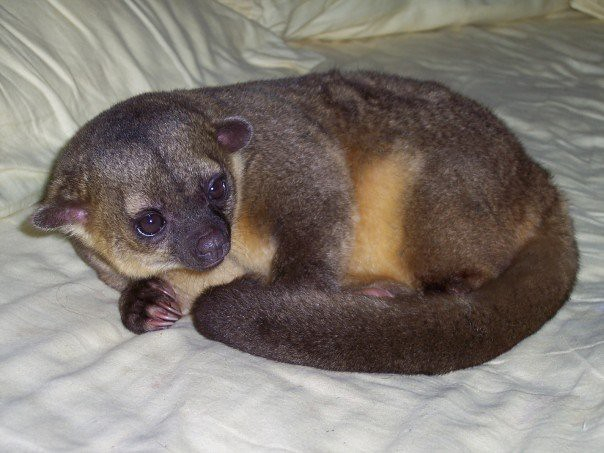Kinkajou
In the world of common animals that start with the letter "K," the Kinkajou (Potos flavus) emerges as a delightful and charismatic mammal. This small, tree-dwelling creature, native to the tropical rainforests of Central and South America, captures the hearts of those fortunate enough to encounter its enchanting presence.
The Kinkajou boasts a distinctive appearance characterized by a slender body, prehensile tail, and large, round eyes. Its dense fur, ranging in color from golden brown to reddish-brown, adds to its allure. The Kinkajou's most notable feature is its long, dexterous tongue, used for extracting nectar and honey from flowers, as well as for consuming fruits.
Kinkajous are well-adapted to an arboreal lifestyle, spending the majority of their lives in the treetops. Equipped with sharp claws and a long, grasping tail, they are agile climbers, navigating the dense canopy with ease. Their nocturnal habits make them more active during the night, allowing them to avoid daytime predators and take advantage of the abundant fruit and nectar resources.
Kinkajous are primarily frugivorous, with a diet consisting of fruits, berries, and nectar. Their elongated tongue, which can be extended up to five inches, aids them in reaching deep into flowers to extract nectar. Additionally, they may feed on insects, eggs, and small vertebrates, showcasing their adaptability in finding food sources within their forest habitat.
Kinkajous are generally solitary animals, but they come together during the breeding season. Females give birth to one or two offspring after a gestation period of around 112 to 118 days. The young Kinkajous, known as kits, are born with their eyes closed and are dependent on their mothers for care and nourishment.
















